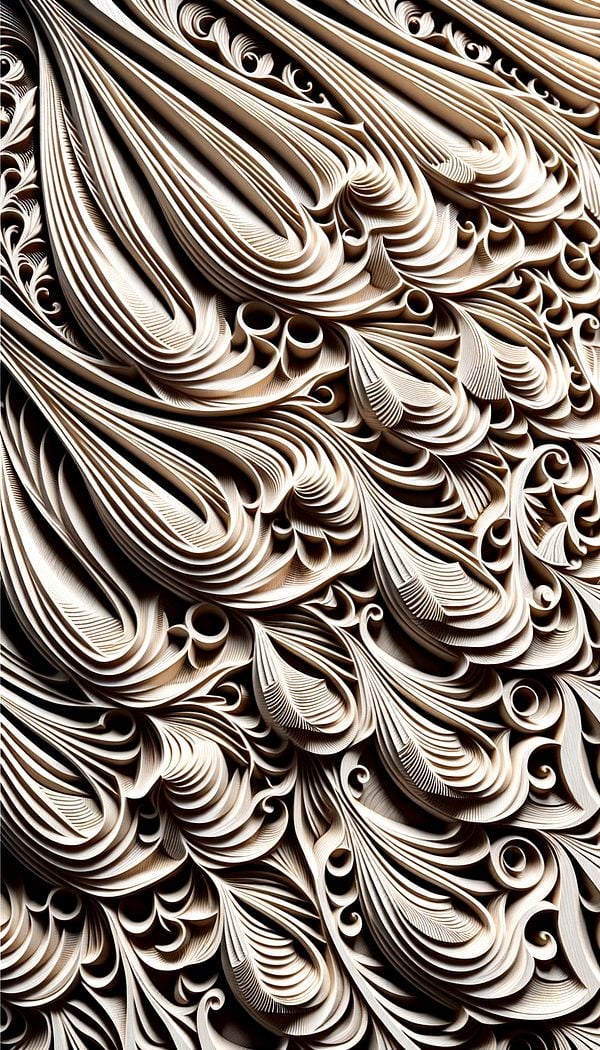What is Linenfold Panel?
Linenfold Panel is a style of carved wood paneling that resembles folded linen.
Description
Linenfold Paneling is a distinctive style of wood carving that gained prominence during the Gothic and Renaissance periods, especially in Northern Europe. The design mimics the appearance of draped or folded linen, achieving a textured, three-dimensional look that adds depth and character to wood surfaces. The intricate folds and soft undulations characteristic of this style mirror the natural drape of fabric, often resulting in a series of patterns that can range from simple and understated to complex and highly detailed.
Traditionally, linenfold paneling was used as a decorative element in the interiors of wealthy homes, churches, and other significant buildings, serving both aesthetic and functional purposes. Over time, it became a symbol of craftsmanship and luxury, with each panel showcasing the skill of the woodcarver. Today, linenfold panels are valued for their historical significance and beauty, and can be found in restoration projects, high-end carpentry, and as a source of inspiration in contemporary interior design.
The panels are commonly made from oak but can also be crafted from other types of wood, depending on the desired finish and texture. The adaptability of the linenfold design allows it to complement a variety of architectural elements and design styles, bridging the gap between traditional and modern spaces.
Usage
Linenfold paneling can be seen in a variety of settings, from the walls of traditional European castles and stately homes to the decorative elements of modern luxury interiors. It's often used in wainscoting, doors, cabinetry, and furniture, bringing a touch of elegance and historical charm to any space. Additionally, custom linenfold panels can be commissioned for specific interior design projects, making them a versatile option for adding texture and visual interest to a room.
FAQs
-
When did linenfold paneling first become popular?
Linenfold paneling first gained popularity during the Gothic period, extending into the Renaissance, particularly in Northern Europe.
-
What types of wood are commonly used for linenfold panels?
While traditionally made from oak, linenfold panels can also be crafted from other types of wood to achieve different finishes and textures.
-
Can linenfold paneling be incorporated into modern interiors?
Yes, the timeless design of linenfold paneling can be seamlessly integrated into modern interiors, serving as a unique decorative element that adds depth and character.
Practical Application
When incorporating linenfold paneling into your interior design project, consider the scale and detail of the pattern to ensure it complements the overall aesthetic of the space. For a subtle touch of historical elegance, you may opt for simpler patterns in areas like wainscoting or cabinetry. For areas where you want to make a stronger statement, such as a feature wall or bespoke furniture piece, more intricate designs can offer a stunning visual impact. Mixing linenfold paneling with contemporary materials and furniture can also create an intriguing blend of old and new, adding a layer of depth to modern designs.
-
Architectural Elements199 articles
-
Design Styles478 articles
-
Furniture Types599 articles
-
Materials & Textiles360 articles
-
Wall Treatments & Finishes157 articles
-
LimewashLimewash is a type of paint made from limestone.
-
CabinetsCabinets are storage units that are typically enclosed by doors, drawers, or shelves.
-
Lincoln RockerA Lincoln Rocker is a specific style of rocking chair.
-
TrivetA trivet is a stand or support used to hold hot pots, dishes, or serving bowls to protect surfaces from heat damage.
-
Butler’s Tray TableA Butler’s Tray Table is a versatile piece of furniture that combines a removable tray with a folding stand.
